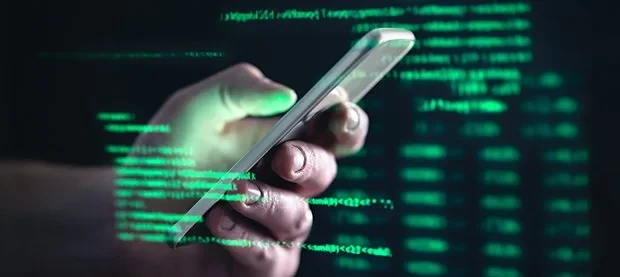The use of telephonic communications to solve criminal cases is not a new development but remains a highly controversial topic. Almost 20 years ago, the Los Angeles Times reported on how law enforcement agencies viewed mobile phones as “a powerful resource in investigations and trials.”1
Even back then, the use of cell phone records was a hot topic that concerned both service providers and privacy advocates. Nowadays, the widespread use of cellular devices is providing even greater opportunities—and more pressing challenges—for law enforcement agencies.
Cell Phone Forensics in Criminal Justice
Cell phone forensics has become an increasingly important part of criminal cases over the past decade, with law enforcement now utilizing entire departments dedicated to investigating digital evidence. In its most basic form, cell phone forensics involves gaining access to a victim’s or suspect’s phone in order to find evidence that might help solve the case. This can be in the form of phone calls, text messages, search history, location data and social media activity.
However, the growing need for advanced security and encryption on modern cell phones has made these types of investigations far more complex. As more and more people use their cellular devices to store sensitive data like bank details and identity information, the need for stronger security grows. This has introduced several legal and technological challenges that require careful consideration by experts in the criminal justice system.2
High-profile Cases
Over the past decade, the area of cell phone forensics has been thrust into the spotlight by several high-profile criminal cases. The most famous of these was a case in which the FBI ordered tech giant Apple to extract data from an iPhone used by a shooter in the San Bernardino terrorist attack. The case made use of an ancient 18th-century law known as the ‘All Writs Act’ that allows a court to demand reasonable technical assistance from a phone company to solve a case.3
The FBI requested that Apple create and electronically sign new software for them to unlock the phone—a request that the company declined. In a statement opposing the order, Apple CEO, Tim Cook, called it an “unprecedented step which threatens the security of our customers.” Furthermore, they believed that allowing the procedure would set a precedent that would undermine the privacy of citizens globally.
Eventually, the FBI found a separate third-party company to unlock the phone, and no incriminating evidence was found. The case, however, opened up a new discussion regarding the extent of powers the government should have over private devices.
Is It Possible to Recover Deleted Phone Data?
There is no simple answer to this question as it involves a myriad of factors that could affect the outcome. These include the age of the device, the make and model, the type of security or encryption used and the regularity of backups. In the most simple cases, police are able to unlock a device using the pin provided by a victim or suspect and find the data they need using basic recovery tools.
However, if a suspect has wiped the phone clean or otherwise removed any deleted message data in an attempt to hide evidence, it can get a little more complex. Similarly, if the device belongs to a deceased person or if the suspect refuses to unlock the device, then more advanced methods of access are required.4
Can Police Read Text Messages That Have Been Deleted?
Deleted text messages are usually retrievable from a phone, but before beginning the process, law enforcement officers would need to obtain a court order. Once obtained, officers can use mobile device forensic tools (MDFTs) to extract any data from a device, including emails, texts, images and location data. The physical device is required in most cases, as network servers only keep copies of text messages or other data for short periods of time.5
Simply deleting a text message from a phone doesn’t actually get rid of the message data; it just unlists the message from your inbox. Eventually, the message data will get overwritten, but this could take months, which is why it’s relatively easy to recover deleted text messages. However, when it comes to messages sent via third-party apps like Whatsapp, it’s a bit more complex as these are usually encrypted.6
How Does the Retrieval Process Work?
Due to common vulnerabilities found in most phones, advanced mobile device forensic tools (MDFTs) are often able to extract a significant amount of data even if the device is encrypted or locked. The scope of data collected is often expansive but can be quickly sifted through using modern search features and filters.7
Agents will usually copy the information onto a separate device and search through it there so as to not directly tamper with evidence. In some cases, account information like usernames and passwords can also be extracted from a device in order to gain access to additional data backed up to cloud-based services.7
In this way, we can see that with the correct legal backing, law enforcement is quite capable of extracting messages from a phone and routinely do so to solve criminal cases. In fact, phone evidence is so useful that Police Detective Melissa Guadagnino says it plays a role in “every case” at the University of Central Florida.8
Going forward, we are likely to see digital forensics play an increasingly important role in the criminal justice system.
Getting Involved in Digital Forensics
If you feel you have a knack for digital forensics and would like to get involved in this emerging field, a Masters in Criminology and Criminal Justice could be the course for you.
Kent State University offers a convenient online Master of Arts in Criminology and Criminal Justice that you can complete from home in your spare time. It covers a broad range of subjects that prepare students for the complex legal and technological challenges of the criminal justice system.
Speak to one of our Admissions Advisors today about the many exciting career opportunities that are available to graduates of our online MA in Criminology and Criminal Justice program.
Sources:
1. Retrieved on March 4, 2021, from latimes.com/archives/la-xpm-2002-sep-06-me-onthelaw6-story.html
2. Retrieved on March 4, 2021, from ojp.gov/pdffiles1/nij/grants/248770.pdf
3. Retrieved on March 4, 2021, from en.wikipedia.org/wiki/FBI%E2%80%93Apple_encryption_dispute
4. Retrieved on March 4, 2021, from cnnmon.ie/168XY6y
5. Retrieved on March 4, 2021, from techwalla.com/articles/how-to-get-deleted-text-messages-for-a-court-case
6. Retrieved on March 4, 2021, from news.law.fordham.edu/jcfl/2016/06/02/cell-phone-forensics-powerful-tools-wielded-by-federal-investigators
7. Retrieved on March 4, 2021, from upturn.org/reports/2020/mass-extraction/
8. Retrieved on March 4, 2021, from clickorlando.com/getting-results/2019/10/09/cellphone-data-helps-solves-cases-at-ucf-every-time-police-say




